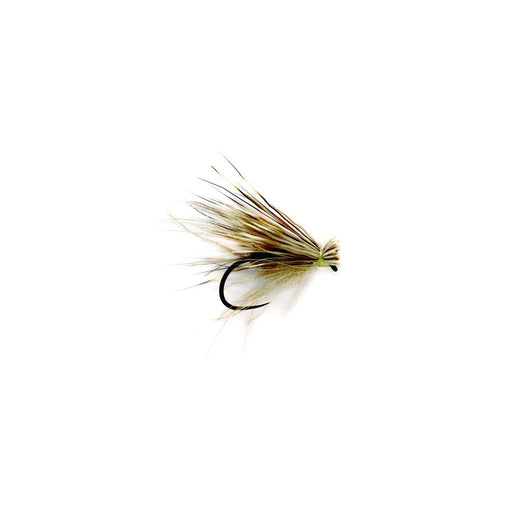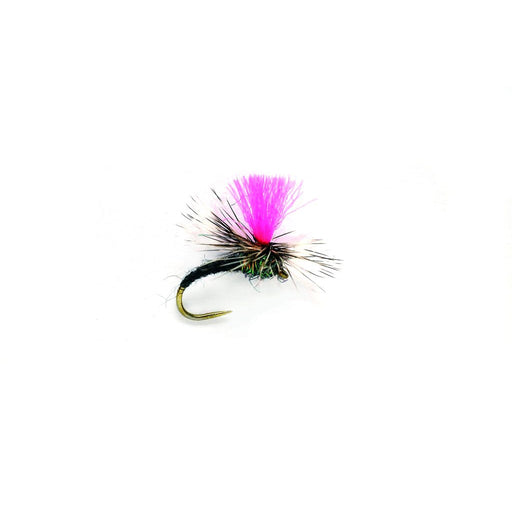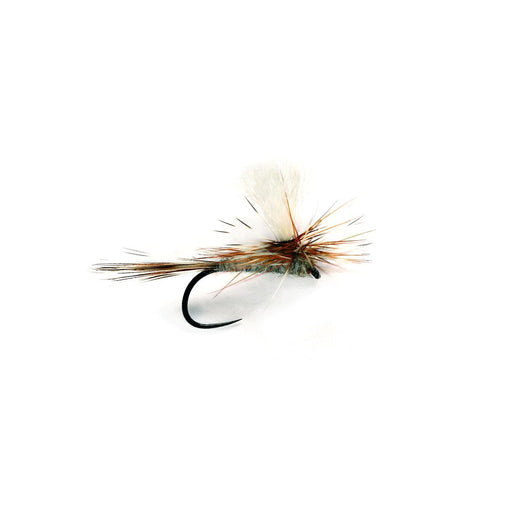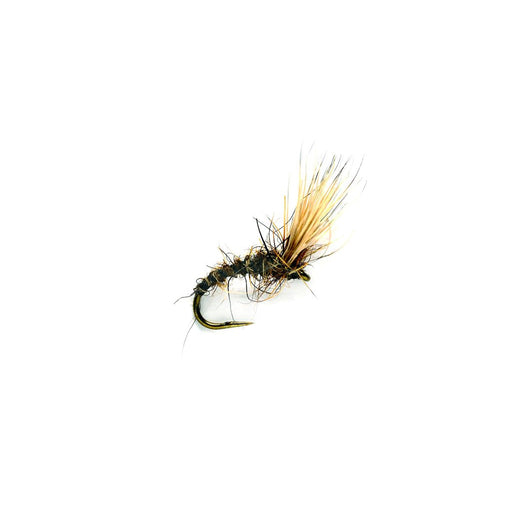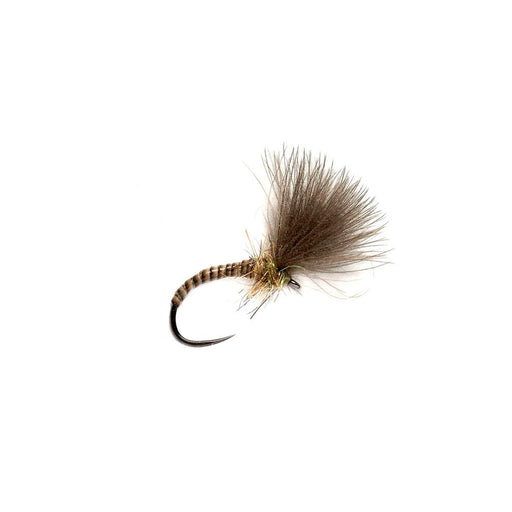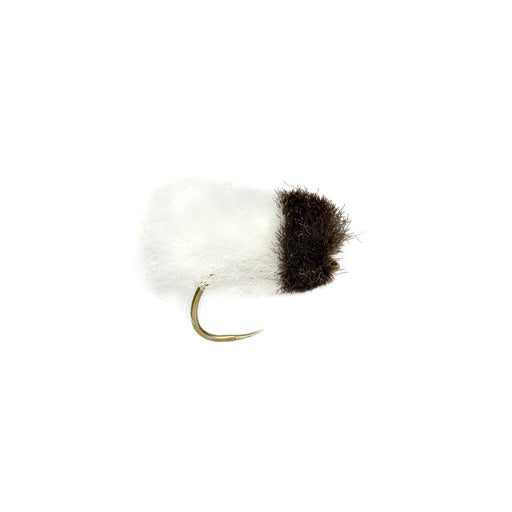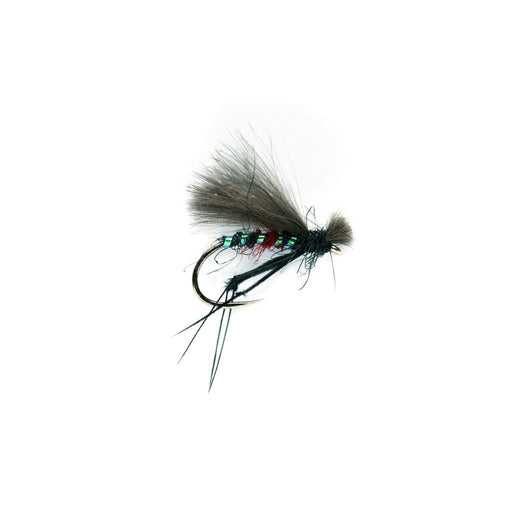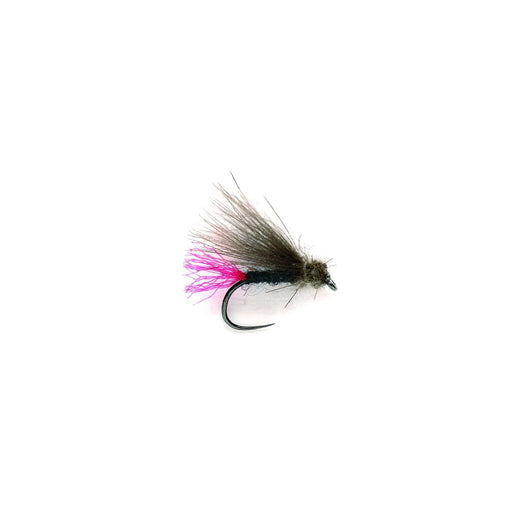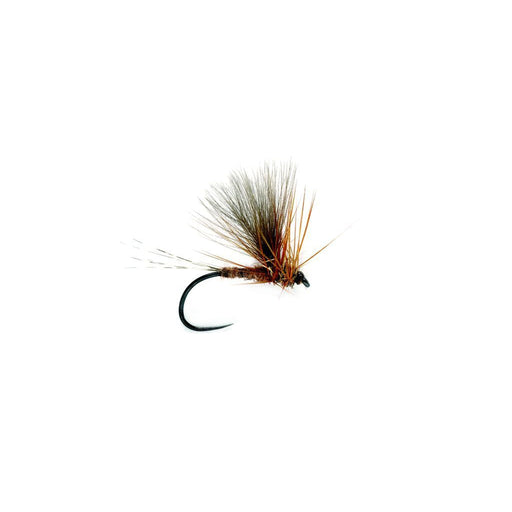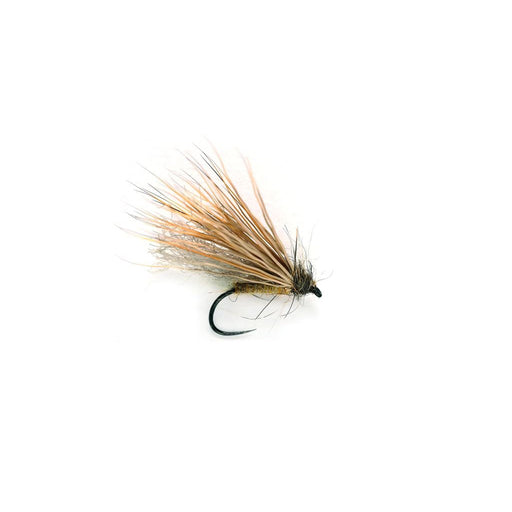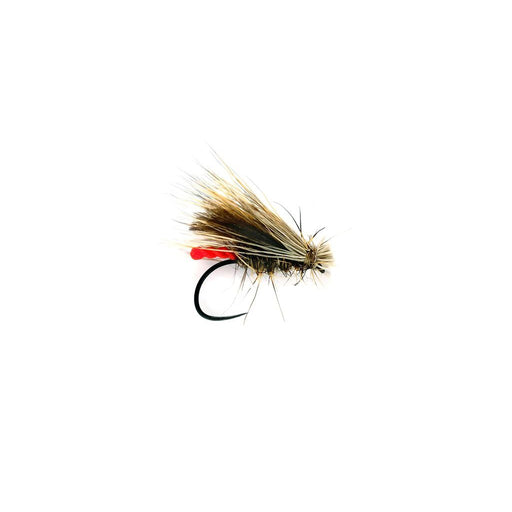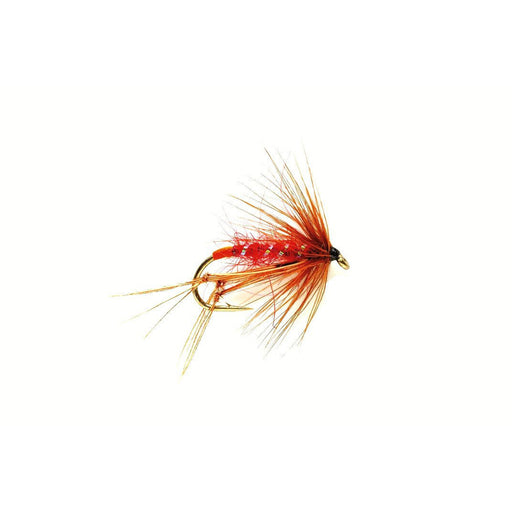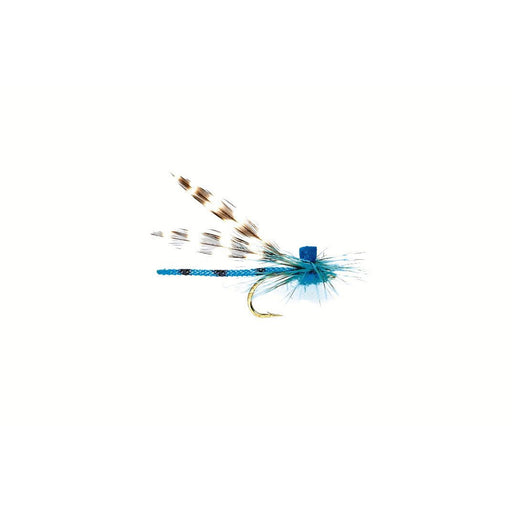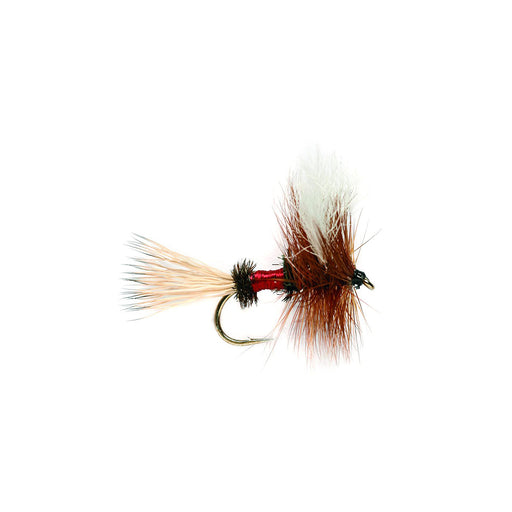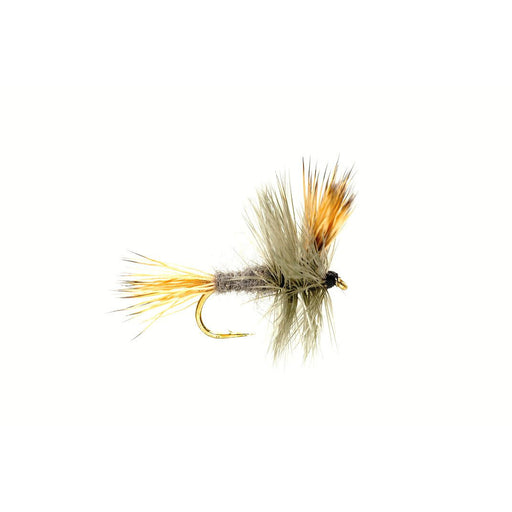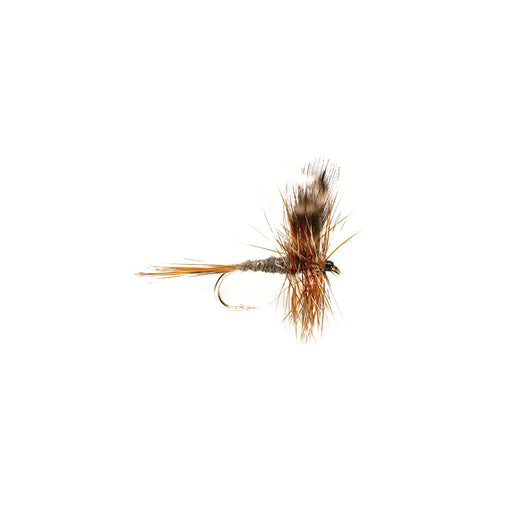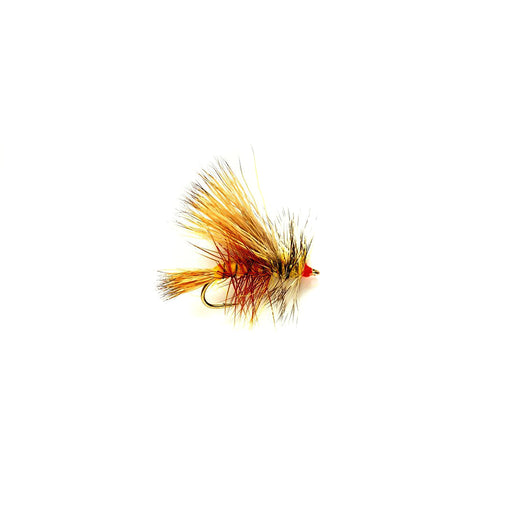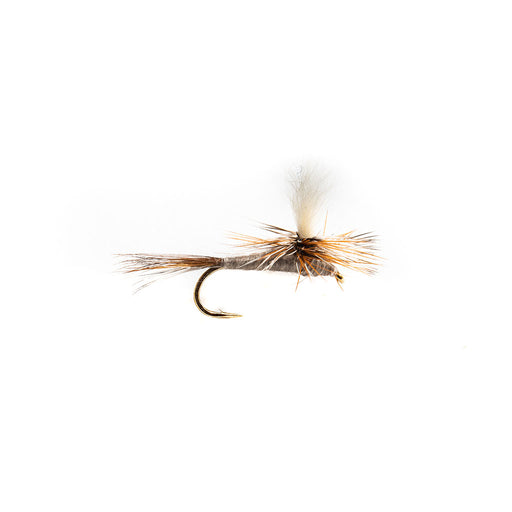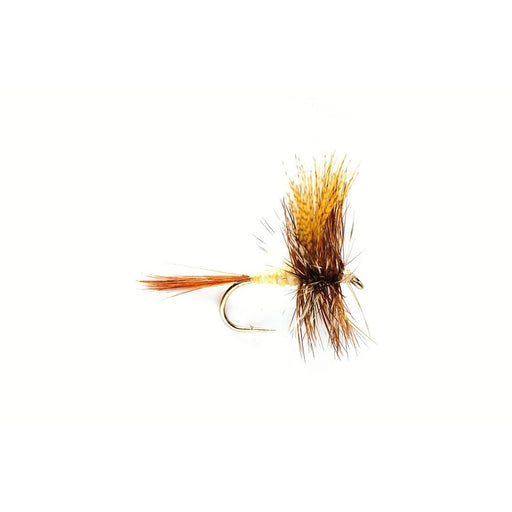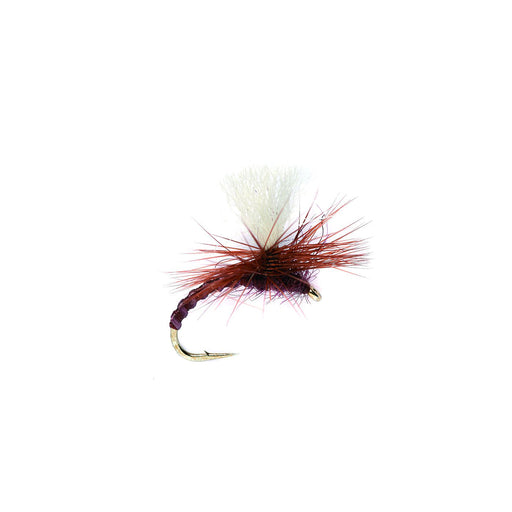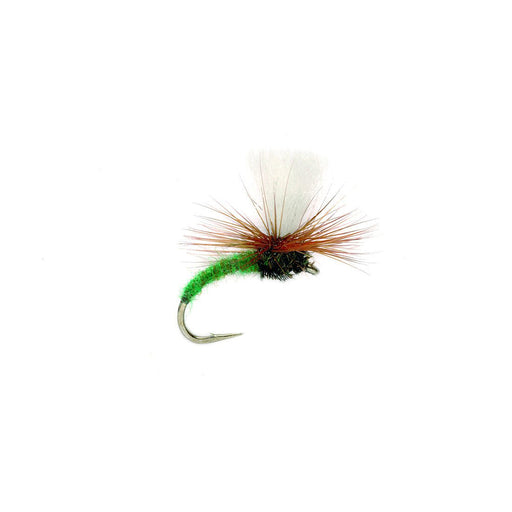
Fly Fishing Gear | Fly Fishing Flies | All
Your fly should be the only thing the fish sees; make it the right one.
At Tom's Outdoors, we boast a huge collection of fly fishing flies from Fulling Mill, MFC, RIO and Catagory 3 Fly Company - We handpick flies that are suitable for use in our local area, around Australia and across the ditch (or dutch as our Kiwi cousins would say).
Click here to read more...
WHAT TYPES OF FLIES ARE BEST FOR TROUT?
There are three main types of artificial flies in freshwater trout fishing, Dry flies, Nymphs and Wet flies (aka streamers) that anglers use to represent most of what trout eat.
- Dry flies: Designed to stay ‘dry’ and float on the water's surface, either representing an insect that has ‘hatched’ out of the water, like a Mayfly-Dun or a Caddis, or representing an insect that has fallen onto the water (terrestrial insects) like a Grasshopper. These flies are generally fished drifted along naturally in the current.
- Nymphs: Represent the aquatic juvenile phase of a water-born flying insect, like a Mayfly-Nymph, Caddis-Grub, or Stonefly-Nymph, and are fished throughout the water column from just under the surface film to the bottom, sinking with the aid of built-in or external weight. Nymphs are generally drifted naturally with the current, as well as being given some small movement underwater from time to time.
- Wet flies (or Streamers): Fished below the water's surface, these flies often imitate larger invertebrates like crayfish (yabbies), mud-eye, and damselfly, as well as larger vertebrates like frogs, baitfish, and even other small trout. They are generally fished quite aggressively through the current to imitate the darting fleeing nature of these prey items.
HOW TO CHOOSE A FLY
The three main things to consider when looking at selecting any fly are Profile, Movement, and Colour, in that order.
- The profile of the fly is one of the first things that a fish sees from a distance and will let them know if they are looking at viable prey; you want to match the size and shape of the food item you are imitating.
- Movement is the next thing that triggers a fish into eating your fly, whether it is slight movement that is ‘built into’ the fly like a soft hackle feather or how the fly reacts when moved through the water, such as the long tail made of marabou on a woolly-bugger.
- Finally, colour is a consideration, but not as important as most people would assume. Fish see colour differently from people and although it can be useful to have a fly in a range of colours, you can generally stick with bright, dark, or natural colours.
A note on ‘Ultra-Violet Hot-Spots’: one important consideration is does your fly have ultra-violet materials built into it? This is often an excellent extra trigger that results in getting fish to eat the flies as many fish species hunt in the Ultraviolet spectrum.
ATTRACTOR-PATTERNS VS IMITATIVE-PATTERNS.
Attractor patterns are designed to suggest life and movement without trying to match exactly one type of food or prey item. Imitative patterns are tied to try and look as much like the real thing as possible. They are both important styles to keep in mind when selecting effective flies for any situation. In general, the longer a fish will get to look at your flies, i.e. fishing very slowly on a lake or sand flat in clear water, the more imitative a fly should be. The less time a fish will see you fly, i.e. fishing a fast-flowing river or stripping a fly quickly through the water column the more of a general attractor a fly can be, the best flies generally have a mix of both!
Here at Tom’s we also stock all the necessary flies for targeting Australian Native Freshwater and Saltwater species. We have flies for Murray-Cod, Australian-Bass, Golden Perch, Flathead, Australian Salmon, Bream, Golden trevally, GT’s, Tuskies, Permit, and pretty-well any other species you’d care to throw a fly at, even carp... (unfortunately) - Native Freshwater and Saltwater patterns often fall into Surface (Floating) or Subsurface (Sinking) categories, most of which are fished actively to imitate the movement of the prey they represent. A typical surface fly would be a popper, which can imitate a frog or mouse ‘blooping’ across the surface, or even a wounded baitfish attempting to escape from a rocky ledge. Subsurface flies can range from patterns that represent baitfish all the way through to crayfish, crabs, shrimp and even drifting seaweed.
NEED HELP CHOOSING FLIES? CONTACT US TODAY
Simply get in touch with our friendly sales team – they’re always up for a chat. You can contact us by calling our Tumut store on (02) 6947 4062 or by email.
Fulling Mill Green Drake - Dry Fly
Fulling MillA style of fly bulked up with hair rather than feathers, originated by American angler Lee Wulff to ensure floatability on the big fast western USA...
View full detailsFulling Mill Chernobyl Ant Black Tan - Dry Fly
Fulling MillThe Chernobyl Ant is an unusual looking fly that is constructed from foam so it is unsinkable, the mobile legs will move with the even slightest of...
View full detailsFulling Mill CdC & Elk - Barbless Dry Fly
Fulling MillThe original Elk Wing Caddis has had the wing modified to include CdC feathers for increased floatation, A few false casts will dry the fly off. On...
View full detailsFulling Mill Black Magic Klinkhammer - Barbless Dry Fly
Fulling MillA best seller. Klinkhammer series flies are named after their inventor Hans Van Klinken from Holland. These sit perfectly on the water because of t...
View full detailsFulling Mill Parachute Adams Barbless Dry Fly
Fulling MillA best seller. A classic dry fly, hugely effective all over the world- if you had to limit yourself to just one dry this would surely be it. Barbl...
View full detailsFulling Mill JL Mole Barbless Dry Fly
Fulling MillA best seller. A very universal F-Fly variant from Jeremy Lucas, especially good when the fish are feeding on small sedges or dark midge. Barbless.
Fulling Mill Deer Hair Emerger Barbless Dry Fly
Fulling MillEasy pickings for fish feeding on adult or emerging bugs or wind blown terrestrials that have become trapped in and on the surface film. Barbless.
Fulling Mill Quill CdC Emerger Natural Barbless Dry Fly
Fulling MillNo Trout fishers fly box is complete, without an array of Emerger patterns. The Fulling Mills CdC Emerger is a great starting point. The use of CdC...
View full detailsFulling Mill Breadcrust - Specialist Carp Fly
Fulling MillA very effective fly when fish are coming up for bread. The Fulling Mill Specialist range has been tailor made for anglers looking to target...
View full detailsFulling Mill CdC Bibio - Barbless Premium Dry Fly
Fulling MillThe CdC Bibio is a variation on the original Hopper as it uses the natural water repellent properties of the CdC feather to keep it in the surface ...
View full detailsFulling Mill Barry's CdC Red Tag - Barbless Premium Dry Fly
Fulling MillA best seller CdC variant of the Red Tag, a versatile fly, fish it as a Red Tag or cut the tail off and you have a black F-Fly. Barbless
Fulling Mill CdC March Brown - Barbless Premium Dry Fly
Fulling MillMarch Browns are an important part of the trouts early season diet, with its slender upright wing this is a great fly to match the natural and temp...
View full detailsFulling Mill Retirer Sedge - Barbless Premium Dry Fly
Fulling MillBased on the brilliant Elk Hair Caddis this is an excellent Sedge pattern, highly imitative and also very buoyant due to its wing of both deer hair...
View full detailsFulling Mill Championship Caddis - Barbless Premium Dry Fly
Fulling MillThe dense CdC feather wing of this adult caddis imitation gives a perfect silhouette of an adult natural, if the fly gets drowned a few false casts...
View full detailsFulling Mill Bristol Hopper Red Premium Dry Fly
Fulling MillThe original standard Bristol Hopper. Inspired by small craneflies blowing onto the lake and 'hopping' from wave to wave, this style has become a...
View full detailsFulling Mill Braided Butt Damsel - Premium Dry Fly
Fulling MillAdult damsel flies are a common sight in warmer months and are eagerly hunted by trout. This pattern is effective whenever naturals are seen hoveri...
View full detailsFulling Mill Wulff Royal- Premium Dry Fly
Fulling MillDefinitely one of the most effective dry-flys of all time; all hail Wulff! A style of fly bulked up with hair rather than feathers. Originated by ...
View full detailsFulling Mill Wulff Grey - Premium Dry Fly
Fulling MillA best-seller that can be used almost anywhere. The original Grey Wulff pattern and its upright wing was invented in the 1930's by American angler ...
View full detailsFulling Mill Winged Adams - Premium Dry Fly
Fulling MillA delicate up-wing dry fly with a sensational following right across the world. An excellent generalist mayfly imitation. Here at Tom's Outdoors, w...
View full detailsFulling Mill Stimulator Yellow - Premium Dry Fly
Fulling MillA highly buoyant, bushy, impressionistic pattern that can be taken for a large adult stonefly, grasshopper or large adult sedge. Particularly effec...
View full detailsFulling Mill Parachute Adams - Premium Dry Fly
Fulling MillThe Parachute is everything you would imagine it to be - dependable, yet simply graceful. The Parachute Adams is a global best-seller for a good re...
View full detailsFulling Mill March Brown - Kosciuszko Dun (Pale Body) Premium Dry Fly
Fulling MillA vital part of any trout angler's fly collection. The natural March Brown is an important early-season food source for trout which appears from Se...
View full detailsFulling Mill Klinkhammer Flexi Claret - Premium Dry Fly
Fulling MillA highly effective dry fly with plenty of potential. The Klinkhammer Flecxi Claret is basically a parachute - designed by Hans van Klinken so that ...
View full detailsFulling Mill Klinkhammer Caddis Green - Premium Dry Fly
Fulling MillBasically a parachute, but designed by Hans van Klinken so that the abdomen and tail dip into the water. Variations abound, but the concept is high...
View full details



